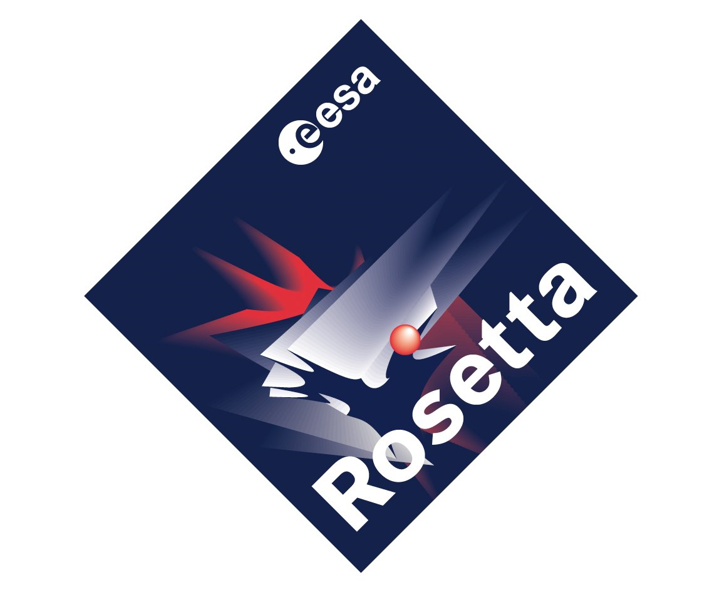The Rosetta mission adventure
Rendez-vous, encounter and detailed study of a comet
The European Space Agency (ESA) has made cometary exploration one of the cornerstones of its Horizon 2000 scientific program, and Rosetta its next mission to a comet. It takes its name from the Rosetta stone that allowed the deciphering of hieroglyphs.
The Rosetta mission is an ESA exploration mission whose objective is to study the comet 67P/Churyumov-Gerasimenko. It is dedicated to the study of the environment of cometary nuclei and their evolution in the vicinity of the Sun.
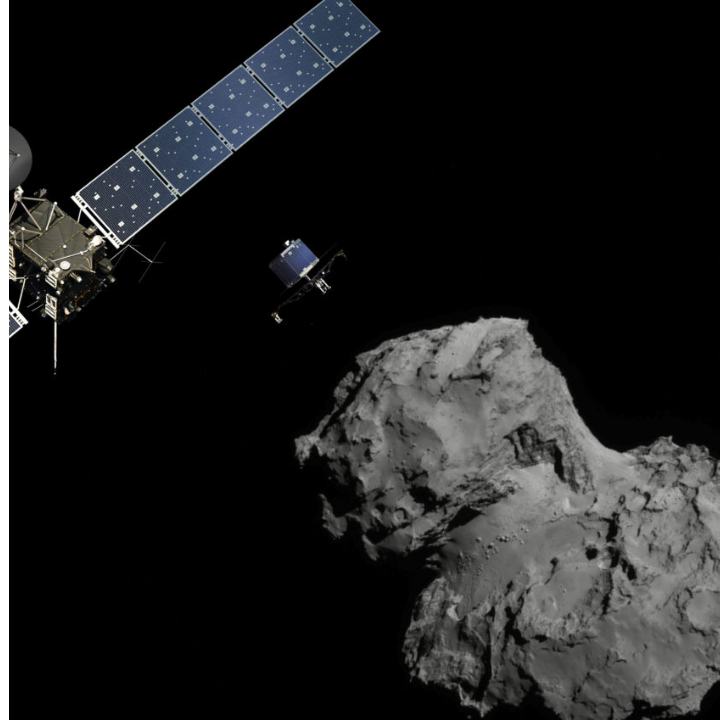
Artist’s view of Rosetta and the Philae lander in the vicinity of comet 67P. Image credit ESA.
Rosetta has achieved 2 world firsts: it was the first mission to put a probe in orbit around a comet and to deposit a landing module on its surface.
Scientific objectives of Rosetta
Rosetta aims to understand the processes at the origin of the Solar System, the formation of the Earth, the origin of terrestrial water, the appearance of life, and to study the relationship between cometary matter and interplanetary matter. To do this, Rosetta will undertake an in situ analysis of the cometary nucleus, its structure and its environment. A true “archaeological” study of the cometary nucleus will be carried out: mapping, solidity, density, texture, thermal properties of its surface, global chemical, mineralogical and isotopic characterization of volatile substances and refractory materials.
Rosetta will observe the comet to study the physical and chemical phenomena that govern the surface of the cometary nucleus and the internal coma. The evolution of the comet’s activity as a function of its distance from the Sun will be studied.
The Rosetta orbiter was the first spacecraft to orbit a comet. It carries 11 instruments (ALICE, CONSERT, COSIMA, GIADA, MIDAS, MIRO, OSIRIS, ROSINA, RPC, RSI, VIRTIS). It looks like an aluminum box of large dimensions 12 m3. It is equipped with 2 orientable solar panels of 32 m span. It uses a mobile antenna for its communications with the Earth (radio signals up to 50 minutes).
The Philae lander was the first probe to land on a comet. It carries 9 scientific instruments (APXS, CIVA, CONSERT, COSAC, MODULUS PTOLEMY, MUPUS, ROLIS, ROMAP, SESAME), a drill to take samples under the surface of the comet, and a hood covered with solar panels.
The main steps of the mission
The launch of the Rosetta probe, initially planned for January 2003 towards the comet Wirtanen, was postponed following the failure of Ariane 5 flight 157 on December 11, 2002. A new appointment was made for a launch between February 26 and March 16, 2004 towards another comet: comet 67P/Churyumov-Gerasimenko.
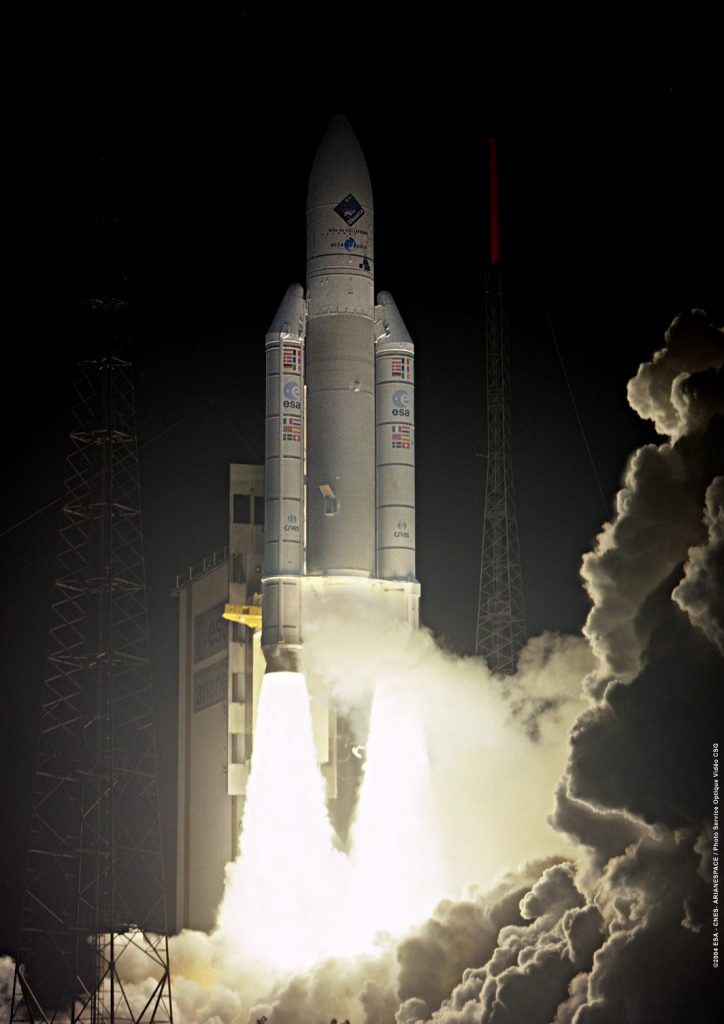
Launch of Rosetta. Credit ESA/CNES/ARIANESPACE.
The program, costing nearly one billion euros, is supported by 17 countries, including Germany, France, Ireland and the Netherlands, in cooperation with NASA, European space agencies and international partners.
The Rosetta cometary probe was launched from Kourou (Centre Spatial Guyanais) on March 2, 2004 by an Ariane5 G+ rocket, carrying 21 scientific instruments (10 on the lander and 11 on the orbiter).
Nearly 2h30 of thrust were necessary to propel ROSETTA in space: 3 tons including 1 670 kg of fuel and 165 kg of scientific experiments before reaching its objective the comet 67P/Churyumov-Gerasimenko, the Rosetta probe undertakes a long journey and passes three times close to the Earth (3/03/2005, 15/11/2007 and 11/11/2009) and once close to Mars (27/02/2007) to enable it to gain speed by gravitational assistance. It crossed two asteroids, Steins (September 2008) and Lutetia (July 2010). Rosetta is then placed in hibernation in June 2011.
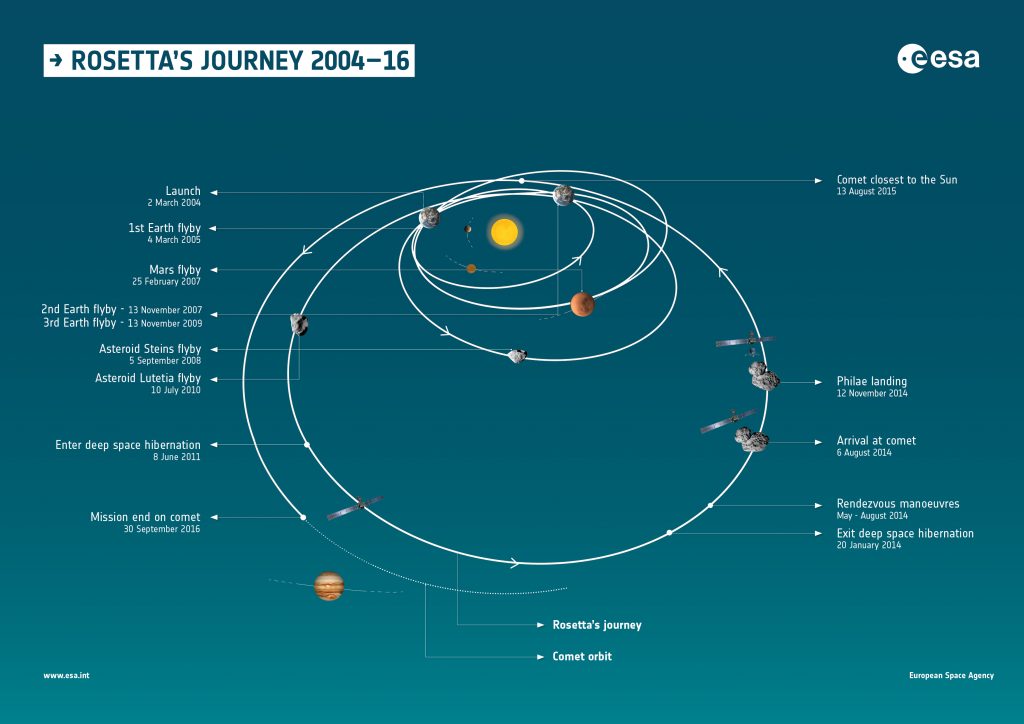
The long journey of Rosetta. Image credit ESA.
The cometary science mission program begins in mid-2014, when Rosetta encounters comet 67/P. The probe then accompanies the comet as it approaches the Sun, observing it relentlessly. A landing module is deposited around November 2014. The study of the comet and its environment extends over 25 months. Nominally scheduled to end in December 2015, the mission has been extended by 7 months, until the end of September 2016.
LPC2E participation
The LPC2E is strongly involved in the European cometary mission Rosetta whose adventure began more than 20 years ago.
The LPC2E is the Principal Investigator (PI) of one instrument (RPC-MIP) and Co-PI of another (COSIMA) both on the orbiter. He has designed and realized different modules of these instruments and brings scientific expertise to the consortia of which they are part. He is also Co-I of the ROSINA and RPC-LAP instruments, also on board the orbiter.
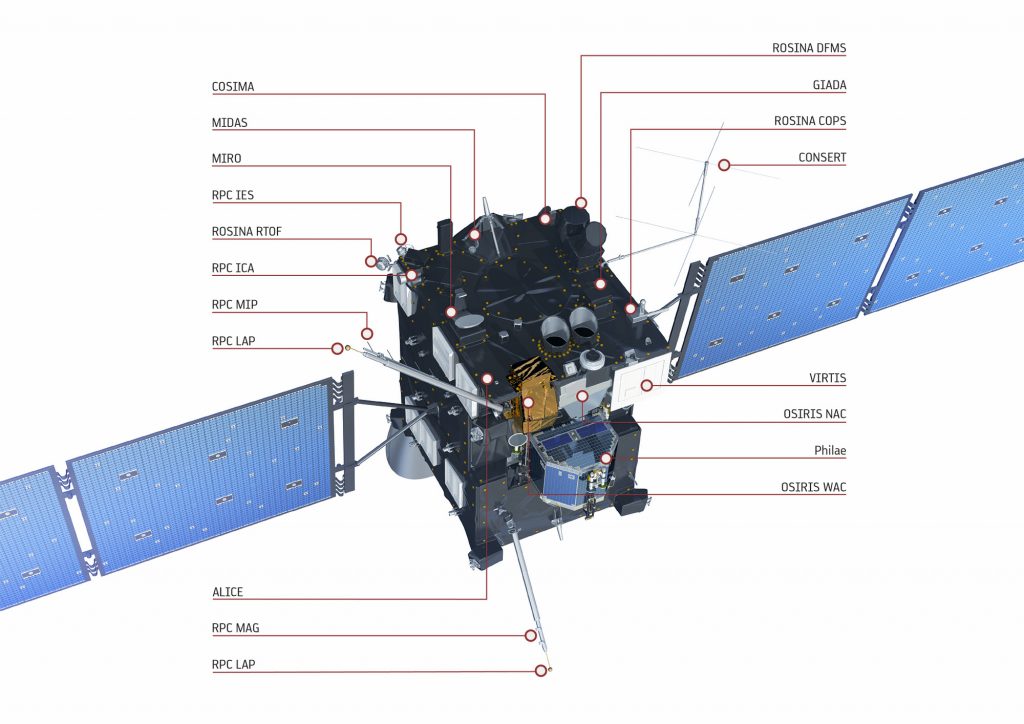
Rosetta’s scientific payload. Image credit ESA/ATG medialab.
The RPC-MIP (Mutual Impedance Probe) instrument and the RPC-LAP instrument (two Langmuir probes) will study the ionized environment of the comet and its interaction with the interplanetary medium with different and complementary measurement techniques. In a particular mode, they will work together, with LAP as transmitter and MIP as receiver. These two instruments are part of the Rosetta Plasma Consortium (RPC), which also includes a magnetometer (RPC-MAG), an electron analyzer (RPC-IES), and an ion analyzer (RPC-ICA) that will be operated in a closely coordinated manner.
The COSIMA (COmetary Secondary Ion Mass Analyser) instrument is a real mini physico-chemistry laboratory which aims at analyzing in situ the composition of dust particles ejected from the coma of comet 67P/CG using the Time Of Flight-Secondary Ion Mass Spectrometry (TOF-SIMS) technique. It is a complex instrument composed of: (i) a storage area for the sample receiving targets, (ii) an articulated mechanical arm to handle the receiving targets, (iii) a camera to determine by taking pictures before and after each exposure to the cometary dust flow, the location of the cometary grains on the receiving targets, (iv) the TOF-SIMS mass spectrometer itself, (v) and a heat treatment area. The COSIMA PI-ship is supported by the Max Planck Institute (which has moved from Lindau to Göttingen), by Dr. Hilchenbach.
The ROSINA instrument (Rosetta Orbiter Spectrometer for Ion and Neutral Analysis) is in fact composed of 2 mass spectrometers with different characteristics and a pressure probe. The mass spectrometers study the gaseous part of the comet. The pressure probe gives information on the environment of the spacecraft. ROSINA is managed by the University of Bern in Switzerland (PI K. Altwegg). See the Rosetta page of University of Bern.
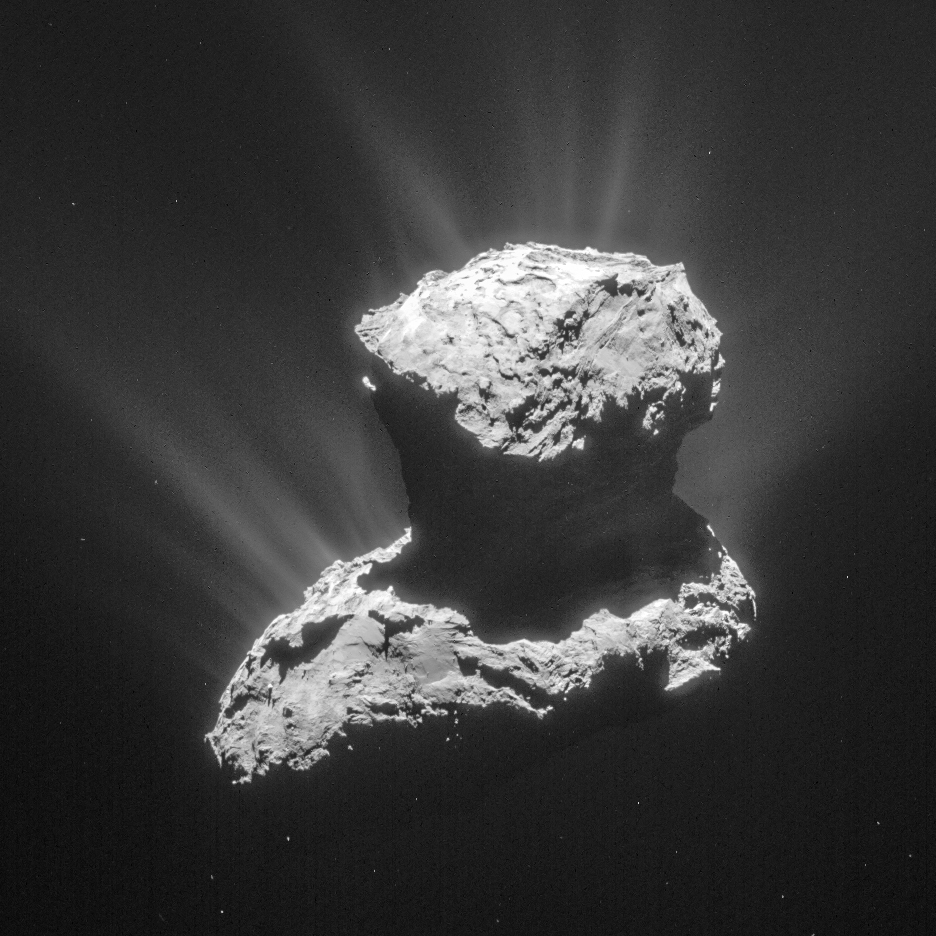
Comet 67P/Churyumov-Gerasimenko. Credit ESA/Rosetta/NacCam.
Contacts at LPC2E :
Christelle BRIOIS: christelle.briois@cnrs-orleans.fr
Jean-Pierre LEBRETON: Jean-pierre.Lebreton@cnrs-orleans.fr
Pierre HENRI: Pierre.Henri@cnrs-orleans.fr

